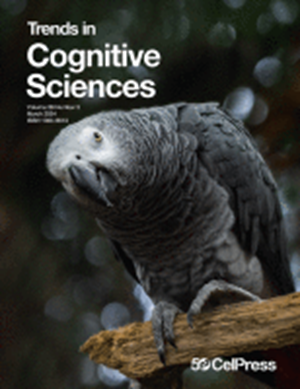发射失败排除了反应抑制。
IF 16.7
1区 心理学
Q1 BEHAVIORAL SCIENCES
Trends in Cognitive Sciences
Pub Date : 2024-05-01
Epub Date: 2024-03-21
DOI:10.1016/j.tics.2024.03.001
引用次数: 0
摘要
对反应抑制的神经分析依赖于将有行为反应和无行为反应的试验分开。研究人员能确定没有行为结果就等于存在抑制控制吗?我们强调利用反应进展的外围测量来定义行为停止对比,从而推进反应抑制研究。本文章由计算机程序翻译,如有差异,请以英文原文为准。
Failures to launch preclude response inhibition.
Neural analyses of response inhibition rely on separating trials with and without a behavioral response. Can researchers be sure the absence of a behavioral outcome equates to the presence of inhibitory control? We emphasize advancing response inhibition research by utilizing peripheral measures of response progress to define behavioral stopping contrasts.
求助全文
通过发布文献求助,成功后即可免费获取论文全文。
去求助
来源期刊

Trends in Cognitive Sciences
医学-行为科学
CiteScore
27.90
自引率
1.50%
发文量
156
审稿时长
6-12 weeks
期刊介绍:
Essential reading for those working directly in the cognitive sciences or in related specialist areas, Trends in Cognitive Sciences provides an instant overview of current thinking for scientists, students and teachers who want to keep up with the latest developments in the cognitive sciences. The journal brings together research in psychology, artificial intelligence, linguistics, philosophy, computer science and neuroscience. Trends in Cognitive Sciences provides a platform for the interaction of these disciplines and the evolution of cognitive science as an independent field of study.
 求助内容:
求助内容: 应助结果提醒方式:
应助结果提醒方式:


